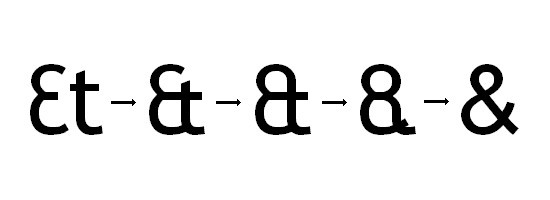

It even had its own place at the end of the alphabet. The phrase ?and, per se, and? was added after the letter z. This partially English/partially Latin phrase means ?and, by itself, and.? However, this poor phrase soon became subject to ?rebracketing?.
Rebracketing
Rebracketing occurs when a phrase is slurred together to form a new word. A prime example of this is the English word ?Alligator?. Originally, we got this word from the spanish word(s): el lagarto {meaning ?the lizard?}.
We eventually slurred this word so much?
el legarto ? ellagarto ? allagarto ? alligarto ? alligator ?
that we got our word, Alligator.
This progression also occurred and gave us the particle ?an?. ?An? is the form of ?a? used before a word beginning in a vowel. However, it wasn?t always a correct particle. It is commonly believed that ?aprons? were once called ?naprons? as they were held using a string that draped over one?s nape (back of the neck). Over time, the phrase ?a napron? was rebracketed as ?an apron? and this particle came into being.
In &?s case, the phrase and, per se, and, was gradually reduced to ?andperseand?, ?an?pers?and? and finally ?ampersand?.
Now-a-days
Now-a-days, the ampersand is a character used for aesthetic in various logos and names. Unfortunately, it no longer holds it position as the 27th letter of the English alphabet.
Fun fact: ?&c? used to be the way to write ?etc? or ?et cetera? which means ?and the rest?.
Bibliography:
http://blog.dictionary.com/ampersand/
http://www.webdesignerdepot.com/2010/01/the-history-of-the-ampersand-and-showcase/